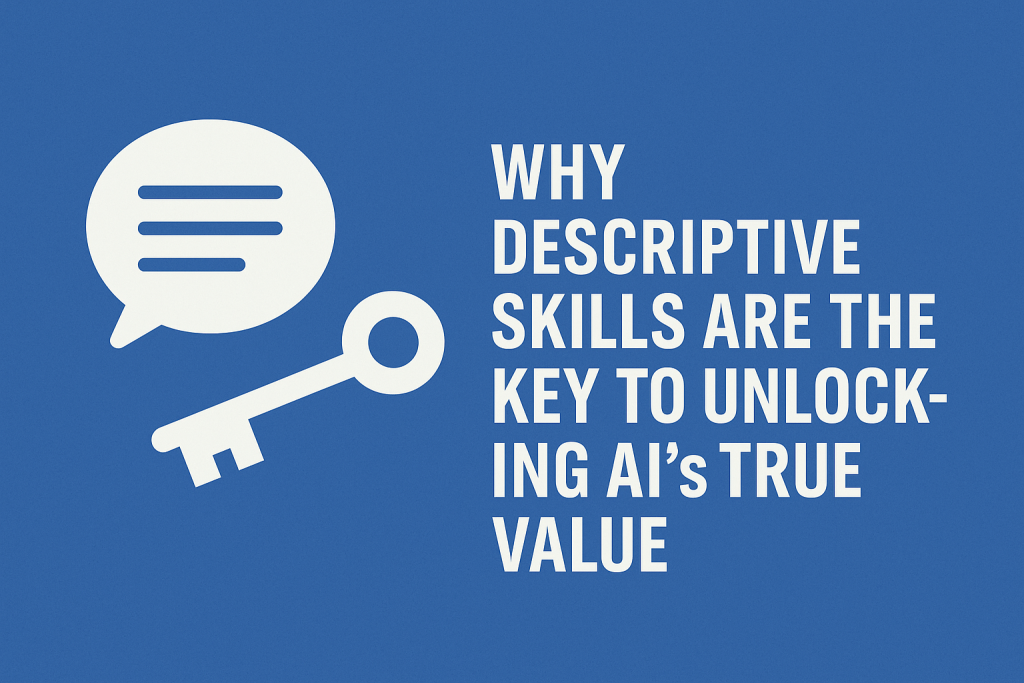
Dr Aruna Dayanatha PhD
The Hidden Barrier in AI Adoption
When I introduce people to AI, I notice a striking phenomenon: they struggle to describe what they are experiencing. They sense something unusual — a new type of interaction, a surprising output, or an unexpected limitation — but they can’t quite put it into words.
I call this the articulation gap.
It may seem like a small hurdle, but in reality, it’s a major disadvantage if you want to get the best from AI.
—
Why Description Matters in AI
Unlike traditional software, AI relies on language. To improve its output, you must express what you want, what you observe, and what feels missing.
If you can’t describe:
why an answer doesn’t fit,
what drift you noticed in its response,
or how the AI output differs from your expectation,
…you can’t refine the interaction. Instead of becoming a cognitive partner, AI is reduced to a one-shot answer machine.
—
Cognitive Scaffolding Requires Words
AI can act as a powerful cognitive scaffold, helping us structure, clarify, and extend our thinking. But scaffolding works only if both sides of the loop communicate.
When users lack descriptive skills:
Feedback loops break → AI can’t adjust to better support thinking.
Reflection weakens → insights stay shallow and unshared.
Learning stalls → AI remains underutilized.
In short, the articulation gap collapses the very structure that makes AI valuable.
—
Orchestration Depends on Description
In my work on the Orchestration Quotient (OQ), I describe four domains:
1. Cognitive-Orchestration – structuring thought with AI
2. Relational-Orchestration – coordinating between human and AI
3. Leadership-Orchestration – guiding teams in AI use
4. Adaptive-Orchestration – adjusting strategies as AI evolves
Across all four, descriptive skills are the hidden foundation. Without the ability to name what is happening, orchestration becomes guesswork.
I propose adding a new sub-skill: Articulative-Orchestration — the ability to describe and communicate the phenomena of working with AI.
—
Building Descriptive Skills in Practice
So how do we close the articulation gap? By embedding description into AI literacy training:
Shared Vocabulary: Terms like “hallucination” or “prompt drift” give shape to experience.
Reflection Templates: Simple frames like “I asked X, AI did Y, I expected Z” help refine prompts.
Modeling: Leaders and trainers should demonstrate how to articulate AI interactions in real time.
Safe Practice: Teams need spaces to practice describing AI outputs without fear of being wrong.
—
Final Thought
The future of AI is not just about more powerful models. It’s about more articulate humans.
By strengthening our descriptive skills, we unlock AI’s potential as a true cognitive partner and orchestration enabler. Without them, we risk leaving the best of AI untapped.
Describing well is the new thinking well.
